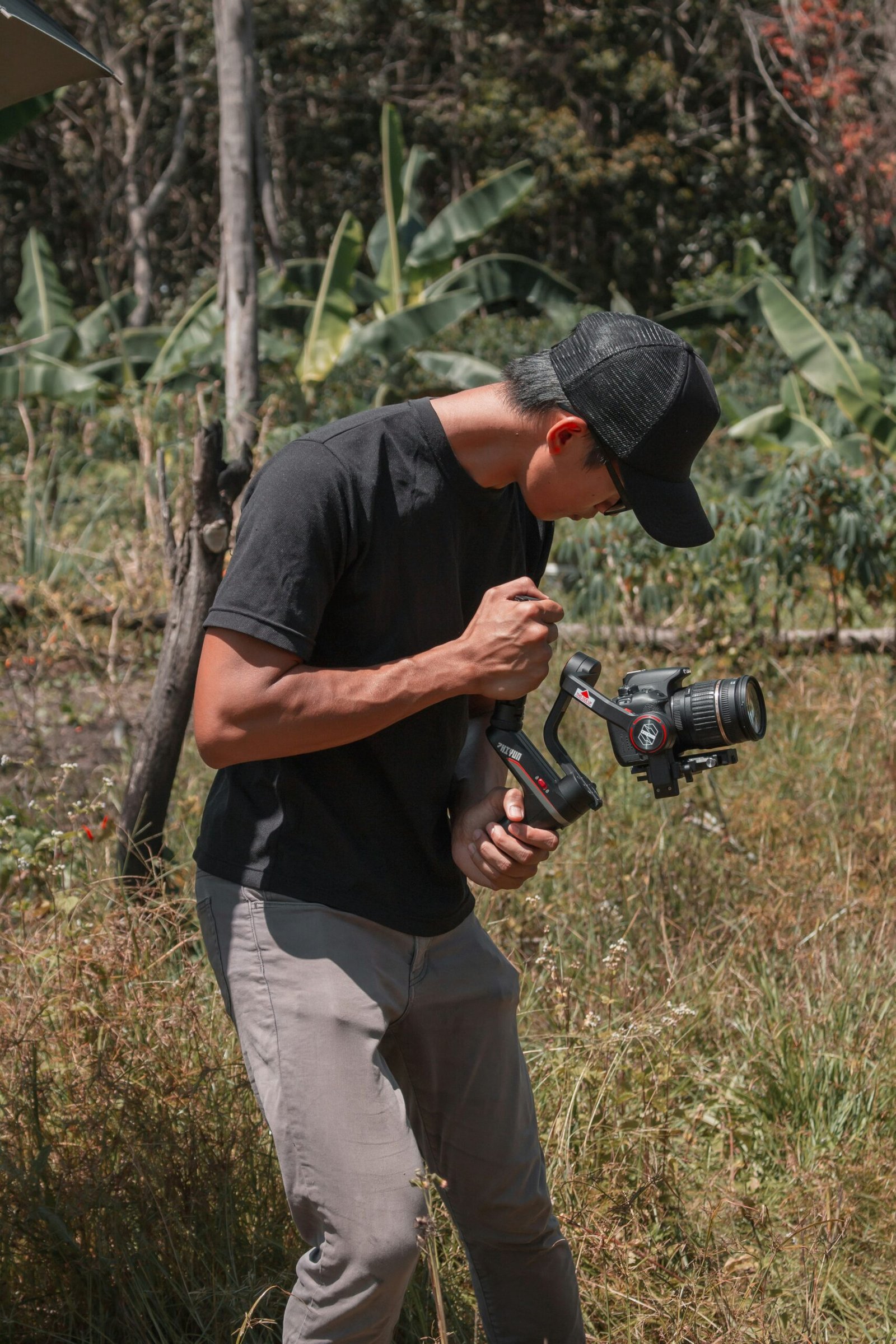
Introduction to Portrait Photography
Portrait photography is an art form that goes beyond capturing mere likeness; it seeks to encapsulate the essence, personality, and emotions of the subject. This genre of photography highlights the interplay between the photographer’s technical proficiency and their ability to connect with the subject on a deeper level. Mastering portrait photography involves a nuanced understanding of lighting, composition, and post-processing techniques, all of which serve to accentuate the individuality and mood of the subject.
One of the central tenets of portrait photography is the ability to extract genuine emotion from the subject. This requires the photographer to build a rapport, fostering a comfortable environment where the subject feels at ease. Understanding the subject’s character traits, habits, and quirks can aid in capturing more authentic and compelling portraits. A photograph is more than just an image; it is a visual narrative that conveys the subject’s unique story.
Technical skills are equally paramount in portrait photography. Elements such as aperture, shutter speed, and ISO settings must be meticulously adjusted to achieve the desired effect. For instance, a shallow depth of field can isolate the subject from the background, drawing the viewer’s attention to the subject’s facial expressions. Proper lighting is crucial, as it can dramatically influence the mood of the photograph. Whether utilizing natural light or studio setups, the intricacies of lighting techniques must be harnessed effectively to highlight the subject’s features and evoke the intended emotional response.
In essence, portrait photography is an amalgamation of technical skills and emotional intelligence. The art lies in striking the perfect balance between these aspects, allowing the photographer to create portraits that are not only visually stunning but also deeply resonant. As both an observer and a storyteller, the portrait photographer has the unique privilege of capturing moments that reveal the profound depths of human personality and emotion.
In the realm of portrait photography, lighting is an indispensable element that profoundly influences the final image. The skillful application of various lighting techniques not only enhances the subject’s facial features but also intensifies the emotionality and mood of the portrait. This foundational aspect begins with the use of natural light, celebrated for its ability to produce soft and flattering effects. Photographers often prefer natural light due to its inherent warmth and adaptability; golden hour, characterized by its rich and diffuse light, is particularly revered for its ability to render skin tones beautifully.
On the other hand, studio lighting offers unparalleled control and versatility, empowering photographers to manipulate light with precision. Studio setups enable the creation of diverse lighting scenarios, ranging from dramatic and high-contrast to soft and even illumination. Key light, fill light, and backlight are common components within a studio environment, each contributing a unique dimension to the portrait. By modifying the intensity, angle, and quality of these lights, photographers can accentuate facial features and sculpt the subject’s visage in nuanced ways.
Understanding lighting placements is crucial for mastering portrait photography. For instance, side lighting can add depth and texture, highlighting the contours of the face, while front lighting tends to minimize shadows, offering a more uniform appearance. Rim lighting, which illuminates the edges of the subject, can create a striking outline that separates the individual from the background, adding a distinct layer of dynamism to the shot.
Beyond mere technique, the strategic manipulation of light also profoundly influences the emotional tone of the portrait. Soft light can evoke a sense of tranquility and intimacy, while stark, directional light might convey intensity and drama. Mastering these lighting techniques allows photographers to forge a deeper connection between the subject and the viewer, ultimately capturing the essence of personality and emotion in every shot.
Mastering Posing and Composition
Portrait photography is an art that intricately balances the technical and the creative. At its core, mastering posing and composition is pivotal in truly capturing the personality and emotion of the subject. To begin with, guiding subjects into natural and flattering poses is essential. This can be achieved by engaging them in conversation, making them laugh, or simply asking them to take a deep breath and relax. These small techniques break the ice and help subjects feel more comfortable, revealing their authentic selves.
While posing, directing attention towards the way the subject stands, where their gaze is, and how their hands are positioned can make a significant difference. Natural poses often involve slight body angles rather than head-on stances, which can be rigid and less flattering. For instance, asking the subject to gently tilt their head or shift their weight to one leg can bring out a more relaxed stance, highlighting their best features.
Equally important is composition, the arrangement of elements within the frame. The rule of thirds is a fundamental guideline in portrait photography. By positioning the subject off-center, especially along the intersection points, the viewer’s eye naturally gravitates to the subject, making the portrait more engaging. However, rules can be bent. Depending on the narrative you wish to convey, centered compositions may exude symmetry and balance, focusing solely on the subject’s presence.
Additionally, the background should complement rather than compete with the subject. Clean, unobtrusive backgrounds allow the subject to remain the focal point. Alternatively, elements in the surroundings that resonate with the subject’s personality, like books for an avid reader or instruments for a musician, can add depth to the portrait.
Ultimately, a successful portrait emerges from a blend of careful posing and thoughtful composition. By making subtle adjustments, using the environment creatively, and prioritizing the subject’s comfort, photographers can produce images that not only capture likeness but also the underlying emotion and character of the person in front of the lens.

Choosing the Right Backgrounds and Environments
The selection of backgrounds and environments plays a pivotal role in portrait photography, as it significantly influences the mood and context of the images captured. A simple backdrop can ensure that the focus remains firmly on the subject, thereby highlighting their personality and emotion. These minimalistic settings prevent any distractions and allow the subject’s expressions, attire, and features to take center stage. On the other hand, environmental portraits that incorporate detailed surroundings can add depth and rich storytelling elements to the photograph. These settings can provide context that is either complementary or contrasting to the subject, enhancing the narrative that the portrait conveys.
When choosing an appropriate background or environment, several factors need to be considered. Firstly, the background should harmonize with the subject and not overpower or clash with them. For instance, a highly decorated interior might suit a person with an artistic or flamboyant disposition but could overwhelm a subject with a more reserved style. Similarly, natural settings like parks, beaches, or urban environments can evoke different feelings and narratives. Natural light and changing weather conditions in such environments also add a dynamic element to portraits, often bringing out different aspects of the subject’s personality.
Lighting is another crucial aspect that can make or break a portrait. Both artificial and natural lighting should be taken into account when selecting a background or setting, as they can alter the subject’s appearance and the overall mood of the photograph. A well-lit, simple background can create crisp, polished portraits, whereas playing with shadows and varying light sources in environmental portraits can add drama and intrigue.
In summary, understanding how to expertly select and utilize different backgrounds and environments is essential in portrait photography. Whether choosing a simple backdrop to keep the focus on the subject or an engaging environment to add narrative depth, the context in which the subject is placed must always enhance and elevate the portrait’s overall theme.
Selecting the Ideal Lens for Portraits
When it comes to portrait photography, the lens you choose can significantly influence the outcome of your photographs. Typically, lenses with longer focal lengths, such as 85mm or 105mm, are preferred for capturing portraits. These focal lengths provide flattering compression, which can minimize distortions and create a more natural perspective. This compression effect helps to separate the subject from the background, ensuring that the focus remains on the subject’s personality and emotion.
The 85mm lens is a go-to choice for many portrait photographers due to its versatility and ability to produce sharp images with beautiful background blur, known as bokeh. This lens is particularly effective for headshots and mid-length portraits, allowing photographers to capture intricate details of the subject’s expression while maintaining a comfortable working distance.
On the other hand, the 105mm lens offers a tighter composition, making it ideal for close-up portraits. This focal length emphasizes the subject’s features and delivers a more intimate portrayal. Additionally, the 105mm lens is excellent for outdoor portraits, as it can effectively isolate the subject from potentially distracting elements in the background.
However, no single lens is suitable for every type of portrait photography. For full-body and environmental portraits, a 50mm lens might be more appropriate. This lens provides a wider field of view, allowing the photographer to incorporate more of the surroundings while still capturing the essence of the subject. Similarly, for group portraits, a wider lens, such as a 35mm, can help include multiple subjects within the frame.
Ultimately, the choice of lens depends on the specific requirements of the portrait session and the creative goals of the photographer. Understanding the characteristics and effects of various focal lengths can enable portrait photographers to better capture the nuance and depth of their subjects, thereby enhancing the overall emotional impact of their portraits.
The Role of Post-Processing and Retouching
In the realm of portrait photography, the role of post-processing and retouching is crucial in refining and enhancing the final images. These processes allow photographers to bring out the best qualities in their subjects, ensuring the portraits capture not just appearance but the essence of personality and emotion. The goal of post-processing is to achieve a polished, professional look while preserving the natural appearance of the subject.
One of the primary techniques in post-processing is smoothing the skin. Carefully applied, this technique can reduce blemishes and imperfections without giving the skin an unnatural, plastic-like texture. Tools such as frequency separation and healing brushes in software like Adobe Photoshop are highly effective for this purpose. By separating the finer details from the texture, it is possible to correct issues in the complexion while keeping the texture intact, thereby maintaining a lifelike quality.
Color correction is another vital aspect of post-processing. Adjusting colors ensures that the skin tones are accurate and pleasing, enhancing the overall harmony of the image. Techniques such as white balance adjustments, selective color grading, and hue/saturation modifications are commonly used. These adjustments should be subtle to avoid altering the subject’s natural appearance.
Lighting adjustments are equally important in post-processing. Enhancing the lighting can add depth and dimension to the portrait, highlighting important facial features without overexposing or casting unwanted shadows. Tools like dodging and burning, as well as global adjustments to brightness and contrast, are instrumental in achieving the right balance of light and shadow.
Ultimately, the objective is to enhance the portrait in a way that retains the authenticity and character of the subject. Over-editing can strip away personality, making the image look artificial. Therefore, achieving a balanced and realistic final image requires a nuanced approach. By focusing on gentle adjustments that enhance rather than distort, photographers can elevate their portraits, ensuring the captured emotions and personality shine through in every shot.
Understanding Your Subject
In portrait photography, comprehending the personality and essence of the subject is pivotal to capturing genuine and expressive images. The foundation of an authentic portrait lies in the relationship between the photographer and the subject. Building rapport is the first and foremost step. It includes engaging in meaningful conversations, establishing trust, and embracing the subject’s individuality. By doing so, photographers can uncover the nuances of the subject’s character, leading to more relatable and impactful images.
One effective technique for understanding your subject is to ask open-ended questions that encourage them to share their stories, experiences, and emotions. Questions such as “What are you passionate about?” or “Can you tell me about a significant moment in your life?” can unveil layers of personality that are crucial to an expressive portrait. The insights gathered from these conversations will not only help in creating a comfortable atmosphere but also provide context to the photographs.
Making the subject feel at ease is another critical aspect. Many people feel self-conscious or nervous in front of the camera, which can be a barrier to capturing their true selves. To address this, photographers should create a relaxed and amiable environment, perhaps by sharing a laugh or playing the subject’s favorite music. Simple gestures like giving positive feedback and showing appreciation for their time can significantly boost their confidence.
Moreover, being observant of the subject’s body language and emotional cues plays a vital role. Acknowledging these non-verbal signals allows the photographer to adjust their approach dynamically, ensuring the subject remains comfortable and engaged. Sensitivity to these details can transform a session, resulting in portraits that genuinely reflect the subject’s personality and emotions.
Ultimately, understanding your subject is a blend of psychological acumen and photographic skill. It is the depth of this understanding that distinguishes a competent portrait from an exceptional one, capturing not just the external appearance but the very essence of the person photographed.
Practical Tips for Successful Portrait Sessions
Conducting a successful portrait photography session requires careful planning and effective communication to capture the true essence and personality of the subject. Start by planning and preparation; it’s essential to understand the purpose of the photoshoot and what the client wants to achieve. Discussing the expectations in detail beforehand can help in creating a clear vision for the session. Preparing a checklist of necessary equipment and props can also ensure that nothing is left to chance on the day of the shoot.
Effective communication with the subject is paramount throughout the session. Creating a comfortable and relaxed atmosphere can help the subject feel at ease, which is vital for capturing natural and authentic expressions. Establish a rapport by engaging in light conversation and giving positive feedback. Guide the subject with clear directives for poses and expressions, but also allow space for spontaneity to capture genuine emotions.
Choosing the right location plays a pivotal role in enhancing the portrait. Whether opting for a studio setting or an outdoor environment, the backdrop should complement the subject and add to the overall narrative of the portrait. Pay attention to the lighting conditions as they significantly impact the mood and tone of the photographs. Natural light often works wonders, but having a backup plan with artificial lighting can be beneficial, especially if the weather is unpredictable.
A seamless and enjoyable photoshoot experience can be achieved by being well-organized and adaptable. Be prepared to handle common challenges, such as fluctuating light conditions, equipment malfunctions, or a camera-shy subject. Patience and problem-solving skills are key in these situations. Taking breaks as needed and offering refreshments can also help keep the energy levels up and ensure a stress-free session for everyone involved.
In conclusion, a successful portrait session hinges on meticulous preparation, effective communication, an ideal location, and the ability to handle unforeseen challenges gracefully. By focusing on these aspects, photographers can create compelling portraits that truly capture the personality and emotion of their subjects.
Reference Links:
- 10 Tips for Stunning Portrait Photography – DIY Photography offers practical tips for capturing compelling portraits, from lighting to posing.
- The Ultimate Guide to Portrait Photography – Digital Photo Mentor provides a detailed guide to mastering portrait photography, including lighting, lens choices, and editing techniques.
- Portrait Photography Tips for Beginners – Photography Talk covers essential tips for beginners looking to improve their portrait photography skills.
Video Link:
- Video: Portrait Photography – 5 Tips for Better Photos – A YouTube video offering five practical tips for improving portrait photography, focusing on lighting, posing, and composition.
These resources will help photographers enhance their portrait photography skills, enabling them to capture images that truly reflect the personality and emotions of their subjects.




